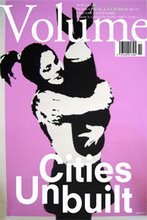Before the almond trees disappear
We do not have to continue to obliterate the past of the Arabs who lived in this land. It would be better to acknowledge the pain of their loss and offer them peaceful coexistence.
By Daphna Golan, 27/02/11 - Haaretz.
In the abandoned village of Lifta, at the entrance to Jerusalem, the almond trees are blossoming, perhaps for the last time. The 50 or so abandoned stone homes, between the green terraces and the fruit trees, are about to be replaced by houses for wealthy foreigners that will be closed up for most of the year.
The Israel Lands Administration has begun marketing Lifta to private developers, without having first prepared a comprehensive preservation plan in accordance with the urban planning program approved for the site and without accounting for the reservations that were accepted by the Jerusalem District Planning and Building Committee.
The marketing campaign violates the Israel Antiquities Authority request to postpone construction until the completion of a comprehensive survey of the village's buildings, "in order to document this disappearing construction culture and pass it down to future generations." It also runs counter to the municipality's adoption last June of a policy designed to curb the flight of young people from the capital by providing affordable housing. The plans for the new development call for homes of from 190 to 300 square meters and development costs alone - not including the building plot - of NIS 500,000 to NIS 1 million.
Lifta is a small link in Jerusalem's shrinking green necklace, its extraordinarily beautiful terrace agriculture a reminder of an extinct cultural landscape. Its land is being divided up and marketed even though no caretaker has yet been assigned to see to the preservation of its springs and green spaces. Jerusalem's treasures are being privatized and given to well-connected developers, who become rich at the expense of the public and future generations.
The village could have symbolized the hope of reconciliation. Many former residents who fled and were driven out in 1948 live in East Jerusalem. The State of Israel obliterated over 400 Arab communities to built Jews-only kibbutzim, moshavim and cities. We do not have to continue to obliterate the past of the Arabs who lived in this land. It would be better to acknowledge the pain of their loss and offer them peaceful coexistence. Lifta allows us to ask the refugees how they see the future of their village. Lifta once had thousands of dunams, on which the Knesset, the Supreme Court, the Kiryat government complex, the central bus station and Hebrew University's Givat Ram campus were built. Now, with only 55 houses, a cemetery, a spring and a few dozen almond trees left, maybe it is time to ask what kind of neighborly relations we are building between Jews and Arabs. What is Israel offering to Yaqub and Sumaya and Zakariya, born and raised in Lifta? What are we, the Israelis who were raised on the denial of the Arab existence on this land, offering our own children?
Five minutes by foot from the Chorda Bridge, dozens of almond trees and hundreds of wildflowers bloom for perhaps the last time. Lifta, which did not become an exclusive artists village like Ein Karem or Ein Hod, stands in its unique desolation, with homes whose roofs were blasted off by the army.
Perhaps it is precisely at the feet of this giant Tower of Babel, that sparkles day and night, that the anemones will continue to blossom as they did last week. A small village, where Jews and Arabs will sit together in the cafe. One place where Israelis can acknowledge the misfortune of the Palestinian people, apologize and explore paths to future coexistence. Until peace is achieved we could ask the people of Lifta, many of whom are civil engineers, architects and contractors, to preserve the village and carry out minimal reinforcement of its homes while drawing up a blueprint for the future.
So long as there is no dialogue between Jews and Arabs in Jerusalem over the city's future, every new building plan is the destruction of hope. From the local zoning committee's recommendation on new construction in Sheikh Jarrah-Umm Haroun earlier this month to the Lifta plan, the trend of building on Palestinian land must stop. Jerusalemites protected Gazelle Valley; perhaps we can also preserve Lifta, in its present, green and beautiful state, for future generations?
Monday, February 28, 2011
Subscribe to:
Comments (Atom)
